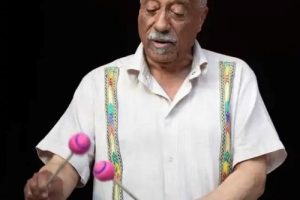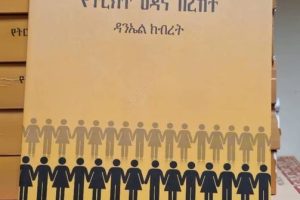
I want to say to my hitherto readers, including my critics, have a life of Ora-omo aka Life of Oromo i.e. life of resurrection which means life of a NEW beginning and success in the rest of your life’s journey. I will try to explain what is meant by Oromo life in this article.
First let me try to elaborate what I mean by life of resurrection.
This term is often used by all three major Judeo-Christian religions (Judaism, Christianity and Islam). But its origin seems to be from earlier beliefs like Waaqeffannaa as we will look at it below.
Nowadays, resurrection is used as a metaphor for the new beginning towards success, new start, new plan, new goal setting, new life journey, and after having experienced death. For Oromo people, resurrection may mean a new start and success after setbacks in our hitherto liberation journey. How is the process of resurrection viewed according to Oromo religion (Waaqeffannaa)?
To be successful in push forward, Oromo people need to empower our Oromo emancipation wing which would mean striving to give confidence and power to ourselves- so that Oromo people can be free from setback
As we approach Irreechaa (Irreessaa, Eretcha, or Irreensa) celebration, we have to think about the two meanings of the word Irreessaa. Irreessaa can be defined as both thanksgiving and empowering. Let us celebrate this year’s Irreechaa in both senses. Let us give thanks to Waaqa and as well empower our nation.
We can empower the great Oromo nation in two ways. First, we should start by coming together before Waaqayyoo and committing ourselves to Tokkummaa. Secondly, by avoiding all possible things that contribute to our division and subsequent weakening like the inner wrangling we have among ourselves. I hope the Irreessaa holiday will be the time to empower Oromo nation and all for the new start and for devising new and more efficient means of struggle to achieve our Kaayyoo.
The story of Irreechaa
Here I will demonstrate how the notion of resurrection is original to Oromo religion before it was taken over by Judeo-Christian beliefs. The celebration of the first harvest of the Ethiopian Spring in September is a story told by the late Poet Laureate Tsegaye G/Medhin (Tsegaye was an Oromo poet who wrote mainly in Amharic). He narrates the story as follows. “12,000 years ago, Asra the God of sun and of sky, God of Cush Pharao, begotten Sete the older son, Ora the younger son and a daughter named as Asis (Atete or Adbar).
The older Sete killed his younger brother Ora and Asis (Atete or Adbar) planted a tree (Odaa) for the memorial of her deceased brother Ora at the bank of Nile in Egypt where the murder had taken place, and she requested her father who was the God of Sun to make peace among the families of Sete and Ora. Then rain has come and the tree (Odaa) grew. It symbolized that peace has taken place. Later, during the Stone Age, the tree that had been planted for the memorial of the killed, Ora was substituted by a statue of stone that was erected 8000 years ago.
The festival for the Ora statue has been celebrated in September of every year when Nile flows full in Nubia and black Egypt. In Ethiopia, during the Axumite and pre-Axumite period a great festival has been held around the statue that was planted by Asis (Atete or Adbar) for the memorial of Ora, the son of the sun’s God, who risen up from death (Ora-Omo or Or-omo) for the purpose of celebrating the peace made between the two brothers. After the memorial was the great herald performed in thanking the God of sun and of sky with Chibo.
The Eyo KA Abebaye, the traditional and popular song performed at Demera events and during the Ethiopia New Year, has been performed since then. “KA” is the first name of God that our Cush Fathers have inherited to us before the introduction of Christianity and Islam to our sub-region. Since that time the Oromo, Gurage and other nations in southern Ethiopia have been calling God as “Waka or Waaqa”.
Therefore, it should be noted that when Oromos sing Eyoka or Eyoha at New Year, we praise “KA”, the God. “Gadaa” or KA Aada” is the law or rule of God. “Gadaa” (KA Aada) is the festival by which the laws and orders of God are executed. Japan, China and India reached their current stage of civilization following basic cultural traditions; they inherited from their forefathers (Hindu, Shinto and Mahiberata).
They also kept their own beliefs intact, even at the time when they were receiving Islam, Christianity, and other ideologies such as democracy. They did not come this far by undermining the culture and traditions of their forefathers.
Culture is the collection of many Chibos or Demeras. “Irreechaa“ or “Irreessea” one of the part and parcel of Gadaa (KA Aadaa) system is the corner stone of and the turning point to the new year for which Asis (Atete or Adbar) has put up the dead body of her brother, Ora who was killed by his older brother (like Abel of Bible) from the place where he died at the river bank of Nile and planted a statue”.
The Oromo people of Ethiopia believed in one Supreme Being called Waaqa (Equivalent of God) since time immemorial. Their religion is called “Waaqeffannaa” which means believing in one God that is the creator of the whole universe. Irreeechaa means a celebration where people get together and perform their prayers and thank God for the rain, good harvest, peace and all the blessings that he has afforded them.
Waaqeffannaa is a religion that is free from anything and an integral part of the Gadaa System. Our forefathers hold fresh green grass and flowers to perform their prayers and thank their God by going to mountains, to the lake or a riverbank.
Oromos chose mountain tops or riverbanks not to worship the mountains or rivers. For instance, they go to the mountain top to get away from any noise and worship God (Waaqa) with concentration. And they go to riverbanks or a lake because they believe that green is holy, water is life and the places are peaceful where the spirit of God is abundant.
In the Oromo culture, the rainy season is considered as the symbol of darkness. At the beginning of September; the darkness is gone, rivers run shallower and cleaner, and the mud has dried up. As sunshine rules the land, the Oromo people go out to celebrate this great natural cycle with the spirit of worshiping God (Waaqa).
It is interesting to see that the meaning of the word Oromo means Ora-Omo, the resurrected Ora, the resurrected human being, the person of the new beginning and success. Do we want to be Oromo in such a sense? This year when we celebrate Irreechaa around the world where Oromos reside, let us consider having the life of Oromo or the life of Ora-Omo, the life of resurrection, which in general means life of new beginning and success after the hitherto failure or after the repeated setbacks we had based on many factors which are in and out of our control.
I hope Oromos everywhere will commit themselves to such a new beginning for the success both in our collective national interest and individual personal life.
May Waaqayyoo help lead such an Oromo life.
Merry Irreechaa to Oromo! May Waaqayyoo bless Oromia.
BY FAYYIS OROMIA
THE ETHIOPIAN HERALD FRIDAY 4 OCTOBER 2024




